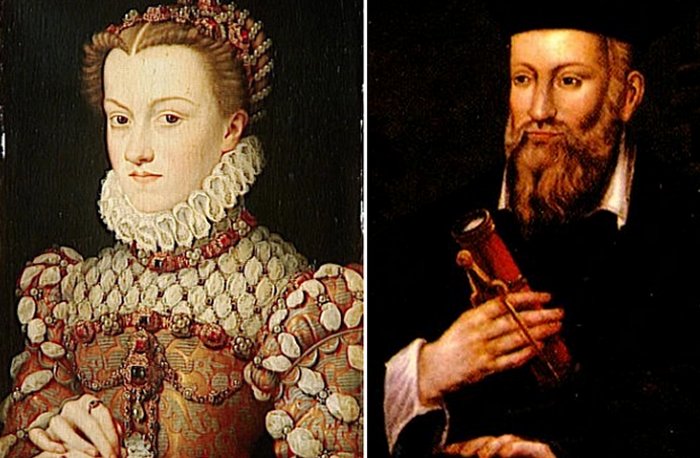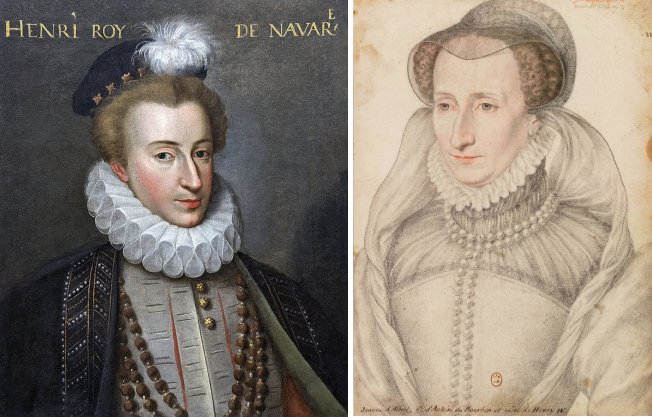Catherine De Medici – Queen Of France Supported Nostradamus, Was Suspected Of Poisoning And Blamed For Horrible Massacre
Ellen Lloyd - AncientPages.com - If you are a Queen or King, you’re expected to set a good example for the rest of the population, something many historical rulers seem to have forgotten about, or simply ignored. On the other hand, ancient Kings and Queens were also expected to deal with problems that gave rise to a serious threat to their nation’s political and religious stability.
This could be especially difficult to accomplish during the reign of Catherine de Medici when religious conflicts were on the rise in Europe.
Catherine de Medici (left) believed in prophecies and supported Nostradamus (right). Both images credit: Public Domain
Catherine de Medici, (1519 – 1589) has been called the most powerful woman in sixteenth-century Europe and some historians say she did not hesitate to exploit her authority as Queen of France. Did Catherine de Medici only do what was necessary when she responded to crisis brought on by the Protestant Reformation, or was she too dominant and added fuel to the escalating religious violence in France?
Was Catherine de Medici guilty of murdering an enemy with poisoned gloves? Why was she blamed for the horrible St. Bartholomew's Day massacre of 1572? Was she ruthless and evil or simply just desperate to keep the Valois monarchy on the throne at all costs? Were the witch accusations against Catherine de Medici pure fantasies or did she practice dark arts?
Catherine de Medici’s Early Years
As the descendant of one of the most powerful Italian families, the House of Medici, it’s no surprise that Catherine should one day become an influential person, but her early years were by no means a dance on roses.
Born on 13 April 1519 in Florence, Italy Catherine was the only child of the daughter of Duke Urbino, Lorenzo II of Medici, and Madeleine de la Tour. Catherine could never enjoy the company of her parents because they both died within a month of her birth. However, she soon became of interest to the Vatican. Two of Catherine's uncles were popes, Pope Leo and Pope Clement VII.
Pope Leo died when Catherine was only two-year-old, but when Pope Clement VII was elected in 1523, she ended up in the Palazzo Medici Riccardi in Florence. Catherine was important to Pope Clement VII because she could improve the Vatican's contacts with France.
Catherine de Medici Marries King Henry II Who Is In Love With Diane de Poitiers
When Catherine was 14-year-old she became the wife of King Henry II, who was the same age.
Catherine and Henry's marriage was not a love affair, and everyone was aware that the king had many mistresses. During her marriage with King Henry, Catherine had no political influence as queen. Henry’s great love and chief mistress, Diane de Poitiers received the Château of Chenonceau, in the Loire Valley and she was more powerful than Catherine.
Of course, the fact that Catherine did not give birth to any children for the first 10 years of their marriage did not exactly improve the situation. Catherine was under pressure to produce an heir. Finally, in 1544 she gave birth to a son who was given the name Francis.
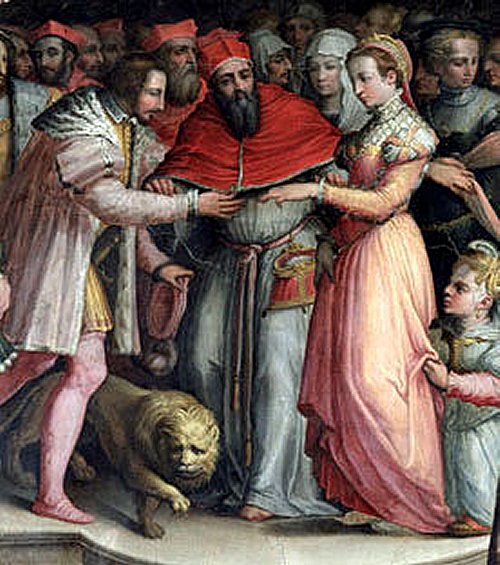 Catherine and Henry's marriage, painted seventeen years after the event. Credit: Public Domain
Catherine and Henry's marriage, painted seventeen years after the event. Credit: Public Domain
After conceiving once, it seemed no longer a problem to produce children. Catherine gave birth to 10 children and seven of them survived to adulthood, and three became kings.
However, her ability to give birth did not improve her marriage. King Henry was deeply in love with his beautiful, 20-year older mistress Diane de Poitiers.
Unexpected Death Of Catherine's Husband Henry II
Henry loved tournaments. On 30 June 1559, a tournament was held near Place des Vosges to celebrate the Peace of Cateau-Cambrésis with his longtime enemies, the Habsburgs of Austria, and to celebrate the marriage of his daughter Elisabeth of Valois to King Philip II of Spain.
Henry did not expect such a fatal end of his life. During a jousting match, Henry was fatally wounded in the eye by a fragment of the splintered lance of Gabriel Montgomery, captain of the King's Scottish Guard. During his life's last tournament, the king's lance wore the colors of Diane de Poitiers (1499 - 1566), his long-lived mistress rather than his wife's.
His life couldn't be saved. King Henry died ten years later, on 10 July 1559, at the age of 40.
Catherine de Medici As A King Mother
When King Henry passed away it was time for his 15-year-old son Francis II to ascend the throne. King Francis II married Maria, the Queen of Scots, but his reign did not last long because he died of an ear infection in 1560.
Eventually, the throne was taken over by his younger brother Charles IX who ruled as King of France for 14 years. However, King Charles IX was not very long-lived either and died at the age of 24. The next king became Henry III, who was Catherine’s favorite son.
Suspicions Of Murder With Poisoned Gloves
Catherine de Medici and her sons lived in difficult times, marked by the rising of religious tensions between Protestants (Huguenots) and French Catholics. In an attempt to solve their doctrinal differences, Catherine summoned church leaders from both sides, but she was unsuccessful and couldn’t reach an agreement that suited both parties.
The Huguenots, French Protestants who followed the teachings of John Calvin suffered severe persecution for their faith, but they were nevertheless gaining power and support from members of the nobility. The Huguenots retreated to the fortified stronghold of La Rochelle where they were joined by Jeanne d'Albret, the Protestant queen regnant of Navarre, and her son, Henry of Bourbon.
Henry of Bourbon and his mother Jeanne d'Albret. Credit: Both images public domain.
In a letter to the Queen of France, Jeanne d'Albret wrote: “We have come to the determination to die, all of us, rather than abandon our God, and our religion.”
Catherine de Medici declared Jeanne d'Albret, the most shameless woman in the world, but she tried to persuade her to come to the Royal Court, something Jeanne d'Albret refused to do.
However, finally, Jeanne d'Albret agreed and it was decided that her son and Margaret, a daughter of Catherine would marry, but only under the condition that Henry could remain a Huguenot.
When Jeanne arrived in Paris to buy clothes for the wedding, she was taken ill and died on 9 June 1572, aged forty-three. Huguenot writers later accused Catherine of murdering her with poisoned gloves. Still, Catherine de Medici’s guilt has never been proven.
Catherine de Medici Was Blamed For St. Bartholomew's Day Massacre
Catherine de Medici became hated and blamed for the horrible St. Bartholomew's Day Massacre in 1572. The massacre took place just some days after the wedding of Henry III of Navarre and Margaret. The bloody slaughter of the Huguenot happened on the night of 23–24 August.
One morning at the gates of the Louvre, 19th-century painting by Édouard Debat-Ponsan. Credit: Public Domain
Who was the initiator of this brutal massacre? Officially, it was King Charles IX who permitted it, but he did so under the pressure of his Catholic mother.
There are no exact numbers of how many people died, but it’s estimated that between 5,000 – 30,000 were killed in the massacre that lasted several weeks. The St. Bartholomew’s Day massacre also marked a turning point in the French Wars of Religion, the second deadliest religious war in European history that cost about 3 million people their lives.
Catherine de Medici's Support For Nostradamus And Interest In Art And Occult Knowledge
Catherine de Medici shared her family’s great love for art. She was also interested in astronomy, astrology, architecture and there were rumors she was fascinated with occult knowledge.
Since Catherine believed in prophecies, it’s no wonder that she became one of Nostradamus’ greatest supporters and admirers. Catherine de Medici made Nostradamus Counselor and Physician-in-Ordinary to King Henri's court. Nostradamus made many predictions that concerned Catherine de Medici and her family. Some of them turned out to be true and she valued his advice. It is even said that Nostradamus made a talisman for her.
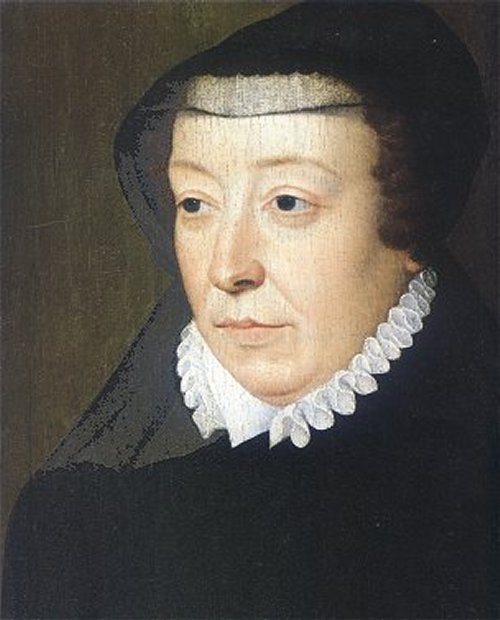 Catherine de Medici, by François Clouet. Credit: Public Domain
Catherine de Medici, by François Clouet. Credit: Public Domain
During her reign, Catherine de Medici was also accused of practicing dark arts that she taught her son Henry II. According to rumors, Catherine de Medici showed great interest in the occult. Her acquaintance with Cosimo Ruggeri, an Italian astrologer was one of the reasons why the Queen of France was suspected of dealing with dark, evil powers. Catherine gave patronage to the Ruggeri brothers and Cosimo was believed to be Catherine's own "trusted necromancer, and specialist in the dark arts". During his lifetime, Cosimo Ruggeri became well-known as a master of the occult, black magic, and witchcraft.
During the Renaissance the distinction between 'magician' and 'witch' was unclear and many queens and ordinary women were accused of witchcraft. There are very few historical documents that could shed light on the truthfulness of these rumors, though.
What we do know with certainty is that Catherine de Medici died on 5 January 1569, aged 69. She was always a strong-willed woman and without her, it’s unlikely that her sons would have remained in power.
Written by Ellen Lloyd – AncientPages.com
Copyright © AncientPages.com All rights reserved. This material may not be published, broadcast, rewritten or redistributed in whole or part without the express written permission of AncientPages.com
Expand for referencesMore From Ancient Pages
-
 Surprising Evolution Discovery – Extinct Subterranean Human Species With Tiny Brains Used Fire
Archaeology | Dec 9, 2022
Surprising Evolution Discovery – Extinct Subterranean Human Species With Tiny Brains Used Fire
Archaeology | Dec 9, 2022 -
 Ajanta Caves: Incredible Accomplishment Of India’s Ancient Stonecutters
Featured Stories | Oct 1, 2015
Ajanta Caves: Incredible Accomplishment Of India’s Ancient Stonecutters
Featured Stories | Oct 1, 2015 -
 4,000-Year-Old Textile Mill Discovered At Beycesultan Mound In Western Turkey
Archaeology | Sep 25, 2020
4,000-Year-Old Textile Mill Discovered At Beycesultan Mound In Western Turkey
Archaeology | Sep 25, 2020 -
 Mystery Of Queen Semiramis: Famous And Powerful Ancient Ruler And Warrior Queen
Featured Stories | Feb 15, 2018
Mystery Of Queen Semiramis: Famous And Powerful Ancient Ruler And Warrior Queen
Featured Stories | Feb 15, 2018 -
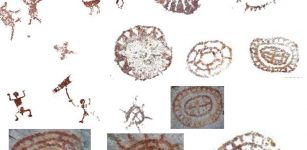 Large Collection Of At Least 2,500-Year-Old Cave Paintings Discovered In Indonesia
Archaeology | Dec 17, 2017
Large Collection Of At Least 2,500-Year-Old Cave Paintings Discovered In Indonesia
Archaeology | Dec 17, 2017 -
 Unsolved Ancient Mystery Of Lost Pre-Olmec Civilization – Evidence Of Advanced Scientific Knowledge That Could Re-Write History
Civilizations | Jul 16, 2018
Unsolved Ancient Mystery Of Lost Pre-Olmec Civilization – Evidence Of Advanced Scientific Knowledge That Could Re-Write History
Civilizations | Jul 16, 2018 -
 Why Is The Hungry Ghost Festival Celebrated In August?
Ancient Traditions And Customs | Aug 12, 2019
Why Is The Hungry Ghost Festival Celebrated In August?
Ancient Traditions And Customs | Aug 12, 2019 -
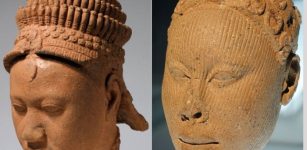 Ife Head: Significance Of The Head ‘Ori’ In Yoruba Ancient And Present Beliefs
Artifacts | Mar 27, 2019
Ife Head: Significance Of The Head ‘Ori’ In Yoruba Ancient And Present Beliefs
Artifacts | Mar 27, 2019 -
 Largest Ever Human Family Tree: 27 Million Ancestors Mapped
Archaeology | Feb 25, 2022
Largest Ever Human Family Tree: 27 Million Ancestors Mapped
Archaeology | Feb 25, 2022 -
 Mysterious Secret ‘Square’ Discovered Beneath Avebury Stone Circle
Archaeology | Jun 30, 2017
Mysterious Secret ‘Square’ Discovered Beneath Avebury Stone Circle
Archaeology | Jun 30, 2017 -
 Controversial 5,500-Year-Old Sumerian Star Map Of Ancient Nineveh Reveals Observation Of Köfels’ Impact Event
Artifacts | Dec 28, 2018
Controversial 5,500-Year-Old Sumerian Star Map Of Ancient Nineveh Reveals Observation Of Köfels’ Impact Event
Artifacts | Dec 28, 2018 -
 Dark History Of Pömmelte, The German Stonehenge – What Can The Nebra Sky Disc And Archaeology Reveal?
Archaeology | Jul 3, 2018
Dark History Of Pömmelte, The German Stonehenge – What Can The Nebra Sky Disc And Archaeology Reveal?
Archaeology | Jul 3, 2018 -
 How Did St. Nicholas Become Santa Claus? – History, Legend And Tradition
Featured Stories | Dec 22, 2023
How Did St. Nicholas Become Santa Claus? – History, Legend And Tradition
Featured Stories | Dec 22, 2023 -
 Proof Of Superior Ancient Technology – Found In All Four Corners Of The World
Ancient Technology | Mar 19, 2014
Proof Of Superior Ancient Technology – Found In All Four Corners Of The World
Ancient Technology | Mar 19, 2014 -
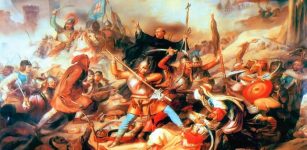 On This Day In History: Siege Of Belgrade – Hungarian Battle Victory – On July 4,1456
News | Jul 4, 2016
On This Day In History: Siege Of Belgrade – Hungarian Battle Victory – On July 4,1456
News | Jul 4, 2016 -
 Enchanted Ancient Egyptian Amulet Seal Discovered In Türkiye’s Amasra
Archaeology | Nov 15, 2022
Enchanted Ancient Egyptian Amulet Seal Discovered In Türkiye’s Amasra
Archaeology | Nov 15, 2022 -
 Unusual Ancient Skeletons Found In Minnesota – But Some Are Not What They Seem
Archaeology | Dec 10, 2024
Unusual Ancient Skeletons Found In Minnesota – But Some Are Not What They Seem
Archaeology | Dec 10, 2024 -
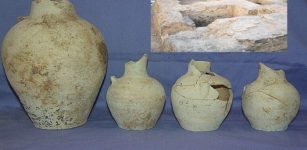 Stone Water Well Dated To Sassanid Era (224-651 CE) Unearthed In Isfahan Hills, Iran
Archaeology | Jun 26, 2020
Stone Water Well Dated To Sassanid Era (224-651 CE) Unearthed In Isfahan Hills, Iran
Archaeology | Jun 26, 2020 -
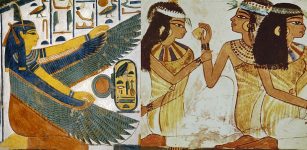 Ancient Egyptian Women Had Equal Rights As Men – Egyptian Cosmology And Goddess Maat Reveal Why
Ancient History Facts | Dec 18, 2017
Ancient Egyptian Women Had Equal Rights As Men – Egyptian Cosmology And Goddess Maat Reveal Why
Ancient History Facts | Dec 18, 2017 -
 Viking Ship Found With Unexpected Goods For Unclear Purpose Puzzles Scientists
Vikings | Nov 24, 2024
Viking Ship Found With Unexpected Goods For Unclear Purpose Puzzles Scientists
Vikings | Nov 24, 2024

